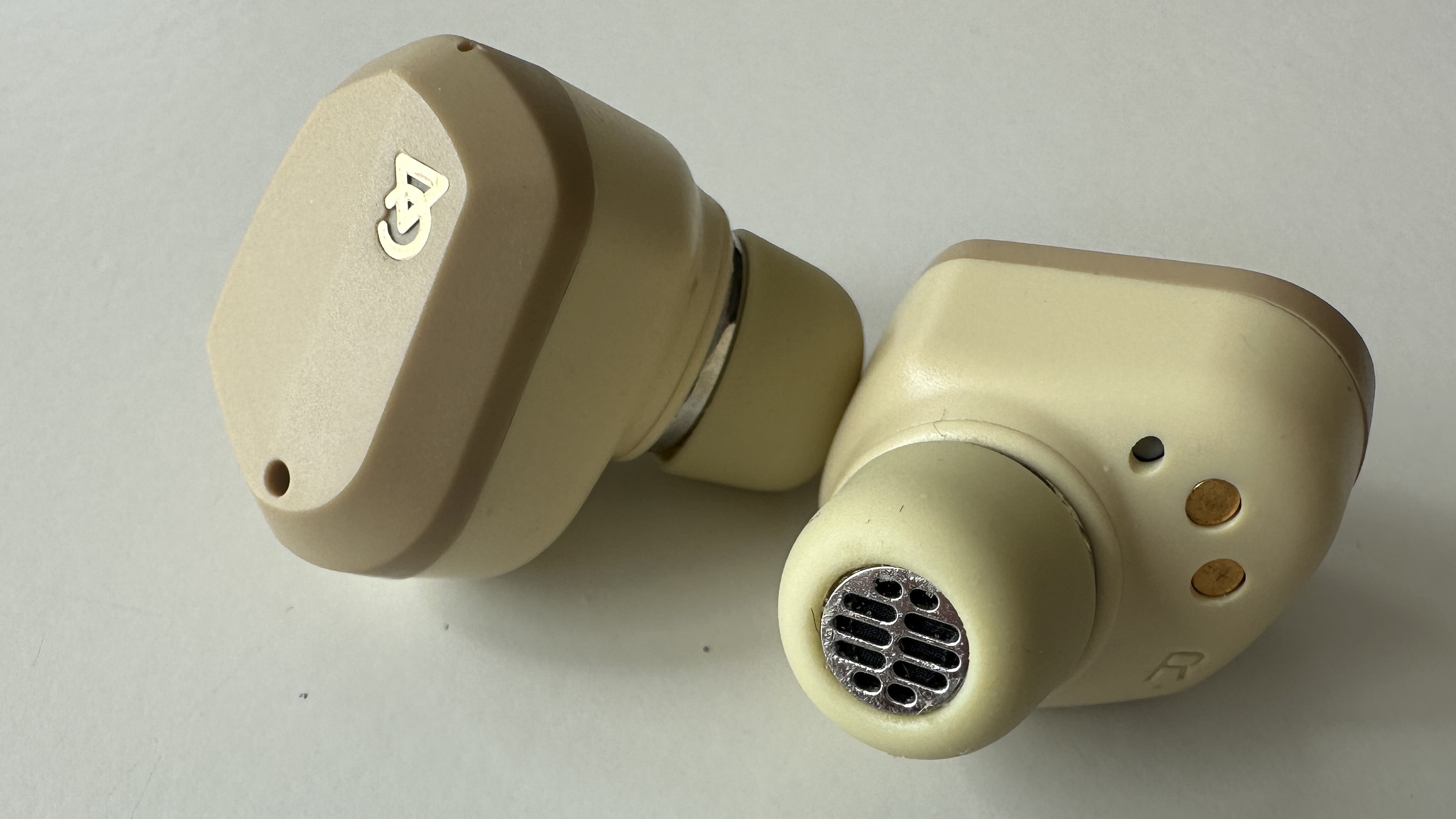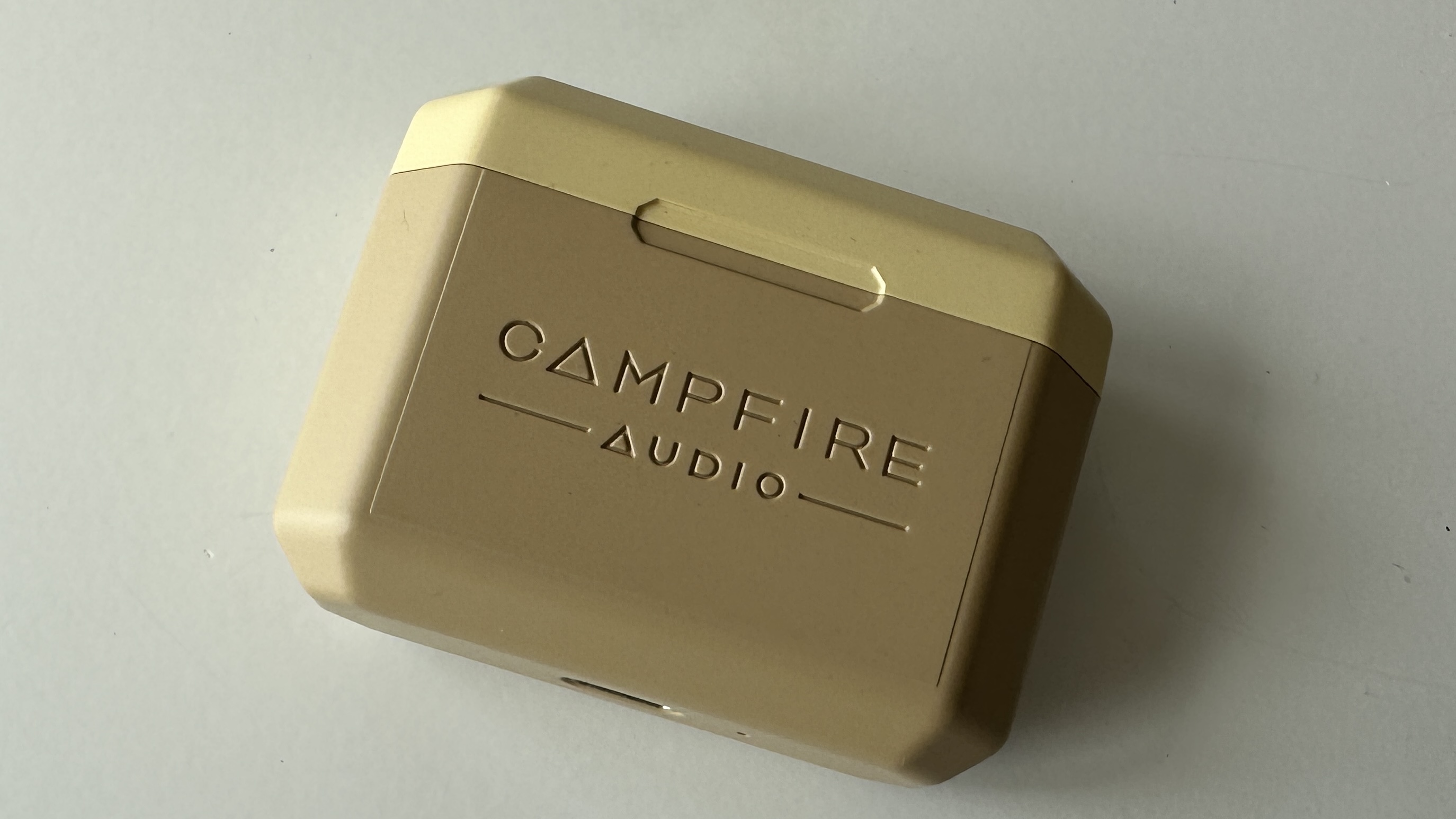Campfire Audio Orbit review: quirky but great sounding earbuds
Has the über-hipster joined the mainstream, or is there more to Orbit than meets the eye?


An oddity, for sure, but that seems to be how Campfire Audio likes it. Besides, you can forgive a lot when true wireless earbuds sound this good…
-
+
Big, convincing and entertaining sound
-
+
Good battery life
-
+
Useful control app
-
+
Quirky looks and finish
-
-
No active noise cancellation (ANC)
-
-
Imperfect touch controls
-
-
No multipoint connectivity
Why you can trust T3

“Number One hipster haven” is how lonelyplanet.com describes Portland, Oregon - and it’s safe to say proud Portland native Campfire Audio is happy enough with that description. Ever since the company got up and running in 2015, it’s been delivering idiosyncratic takes on wired in-ear monitors, with the only constants being celestial model names, giddy designs and giddier price-tags. Nicely done, as the company tag-line has it.
With Orbit, though, those last two traits have been parked. Orbit is a pair of true wireless earbuds, realistically priced by Campfire Audio standards and designed (whisper it) relatively conventionally. Has the über-hipster joined the mainstream? Or is there more to Orbit than meets the eye?
Campfire Audio Orbit review: price & release date
The Campfire Audio Oribut true wireless in-ear headphones are on sale now, and in the United Kingdom they sell for £249. In the company’s native United States they go for $249, while in Australia you’re looking at AU$429.
This is premium money for a pair of true wireless headphones, let’s not pretend otherwise - and especially for TWS that go without some quite standard features. So the Orbit must be mighty talented in other areas in order to justify that asking price. Musn’t they?
Campfire Audio Orbit review: features & what's new?

If you’re expecting the full-service experience you’ve become used to from the likes of Sony or Technics true wireless in-ear headphones, the Campfire Audio Orbit are going to seem a little impoverished where features are concerned. If you’re the charitable type, though, you’ll assume this is because the Orbit are strongly performance-focused.
So before we launch into complaining about the features the Orbit go without when compared to their best similarly priced rivals, we should at least discuss those features that are present. If for no other reason than to confirm that, yes indeed, the Campfire Audio Orbit are strongly performance-focused.
The Orbit use Bluetooth 5.2 for wireless connectivity, and are compatible with SBC, AAC and aptX codecs and Bluetooth LE. There’s a 10mm full-range liquid crystal polymer dynamic driver in each earbud serving up the sounds - Campfire Audio is claiming a frequency response of 5Hz - 20kHz.
Get all the latest news, reviews, deals and buying guides on gorgeous tech, home and active products from the T3 experts
Battery life is a fully competitive 8 hours from the earbuds, and the charging case holds another 30 hours or so - so as long as you’re not caning the volume, 38 hours between charges is achievable. Ten minutes on the power should hold you for another hour or so. And thanks to an IPX5 rating, you can spend those hours in more-or-less any environment you like.
As far as what’s missing where true wireless in-ear headphones at this sort of money are usually concerned, the most obvious and most glaring is active noise-cancellation. In fact, we can only think of the (similarly performance-orientated) Grado GT220 that have the nerve to omit this feature - everyone else who wants to part you from £200 or more for its true wireless product includes it as a matter of course. Then there’s multipoint connectivity - or, rather, there isn’t. And there are no sensors in the Orbit to take note of when you remove the earbuds - so they just keep on playing until you tell them not to.
Campfire Audio Orbit review: performance

Everything we’re about to say about the way the Campfire Audio Orbit perform has to be contextualised. True wireless in-ear headphones, almost by definition, are designed to be used when out and about - and if ‘out and about’ should happen to mean an especially noisy place, the Orbit are not equipped to handle it. The way they fit offers a degree of passive noise isolation, but all of their good sonic work - and there is plenty to admire - can be overridden by external sounds.
If you’re in a suitable environment, though, there’s a great deal to enjoy in the way the Orbit sound. They create a large and persuasive soundstage, with plenty of space both left/right and front/back in which to lay out the individual elements of a recording. Every strand gets more than enough elbow-room to do its thing - but the Orbit manage to present every recording, whether it’s busy and complex or skeletal and spare, as a coherent, unified whole. There’s a sense of togetherness, of performance, to the Campfire Audio sound that’s not always a given when a soundstage is as big and strictly defined as this is.
From the bottom of the frequency range to the top, their tonality is beautifully judged. Bass sounds are deep, textured, loaded with detail and are controlled so carefully that the leading edges of low-end sounds are unequivocal. There’s real momentum, as well as solid underpinning, to the low end, and as a result rhythms are describe with absolute positivity.
At the opposite end the Orbit gives treble sounds just as much detail, a fair amount of substance and plenty of bite. Sometimes, if given an unsympathetic recording, or a big dose of volume, or especially both, the top end can get this close to becoming hard or abrasive - and yet somehow it never quite gets there. Instead, it’s bright and shiny - and every bit as accomplished at the low end when it comes to control and expression.
And in the wide open spaces of the midrange, the Orbit absolutely pile on the information. Voices, in particular, feel the benefit of the earbuds’ fanatical attention to detail - if there’s emotion, character or attitude in a vocal performance, the Orbit will identify and contextualise it. Tonality is approaching ideal, and the articulacy of the presentation allows singers of all techniques and competences to communicate torrentially.
Where the low-level harmonic variations in a voice, or particularly apparent in a solo instrument, are concerned, the Orbit identify them readily and give them exactly as much emphasis as they require. The big shifts in out-and-out volume so beloved of indie bands and symphony orchestras alike are handled decisively, with the earbuds putting appreciable distance between the quietest and loudest parts of a recording. And throughout, no matter the sort of stuff you’re listening to, the Orbit sound engaged and entertaining - their powers of analysis are considerable, but their palpable enthusiasm is every bit as apparent.
Campfire Audio Orbit review: design & usability

The first thing you’ll notice about the Orbit earbuds is just how small they are - the customary Campfire Audio angularity of housing makes measuring them a bit of a chore, but anyone who’s used to wearing, say, a Bose QuietComfort Earbud II is going to find the Orbit earbuds somewhat on the titchy side. The case, no less angular, is easier to measure: it’s a tidy 45 x 60 x 25mm (HxWxD).
Actually, that’s probably not the first thing you’ll notice - because the Orbit case and earbuds are a sort of two-tone yellowy brown that’s reminiscent either of medicine or toffee (or cafe au lait, as we’re dealing with hipsters here). Campfire Audio has never been afraid of a distinctive finish for its products - and it seems fair to say you’ll never confuse the Orbit for any other product by any other brand. Especially when you a) open the case to find it’s lined in a very assertive acid lime green colour, and b) you realise there are yellowy silicone eartips in the packaging along with some black foam alternatives.
Each eartip covers a stainless steel spout with a gridded driver guard. The case and eartips are made of ABS, and there’s a gold-coloured ‘CA’ logo on each earbud. Each earbud also has mic openings to allow for use with a source player’s native voice assistant and to deal with telephony. The charging case, meanwhile, has a USB-C socket (it’s also compatible with Qi-certified charging pads) and a strip of four LEDs inside to give some idea of remaining battery life.
Usability is pretty good - as long as you can get the earbuds out of the case in the first place. They’re extraordinarily and unnecessarily snug in there and altogether too fiddly to extract elegantly. Once they’re out, though, they’re simple to position comfortably and (generally) simple to operate thanks to a combination of capacitive touch-surfaces and a passably well-implemented control app.
The touch surface covers off the usual stuff: ‘play/pause’, ‘skip forwards/backwards’, ‘volume up/down’, ‘answer/end/reject call’ and ‘wake voice assistant’ - and they’re certainly more responsive than some alternative designs we could mention. Our right earbud isn’t always cooperative, though. A double tap is meant to be ‘skip forwards’, while a double tap on the left is ‘skip backwards’ - in practice, though, sometimes all that is available from a double tap on either earbud is ‘skip backwards’. Bad news for the easily frustrated (and we include ourselves in that).
The function of the touch controls can’t be altered in the control app, but they can at least be individually defeated - so if you want to turn off ‘double tap’ altogether, go right ahead. The app is also good for checking for firmware updates, checking on battery life, establishing the Bluetooth codec that’s being streamed, and making EQ adjustments. For some reason, Campfire Audio’s are numbered 1-7 (in addition to ‘off’) rather than being named - and there’s no facility for examining the actual EQ settings themselves. Custom settings are available using a seven-band equaliser - and they are marked ‘A’, ‘B’ and so on. It’s a strangely austere methodology for a company that’s usually all-in on the user experience.
Campfire Audio Orbit review: Verdict

That the Campfire Audio Orbit aren’t for everyone should be apparent by now. After all, it’s not unreasonable to expect your premium true wireless money to buy quite a lot of extended functionality - that precedent was set some time ago. So if you can’t live without noise-cancellation or multi-point connectivity, look elsewhere - you are hardly short of high-quality choice. But if you can live with the specification gaps, these earbuds are among the most compelling listens around - and we don’t say that lightly.
Also consider
In purely sonic terms, the similarly focused Grado GT220 are worth investigating - they sound great, they have no noise cancellation and they look a bit weird, which puts them firmly in Campfire Audio Orbit territory. If you’re looking for a more comprehensive experience, though, then the usual suspects are the ones you should investigate - especially the Bose QuietComfort Earbuds II (great sound, extraordinary noise-cancellation) and the Sony WF-1000XM4 (the best all-round experience going, and so close to being replaced that deals must surely be available by now).
Simon Lucas is a freelance technology journalist and consultant, with particular emphasis on the audio/video aspects of home entertainment. Before embracing the carefree life of the freelancer, he was editor of What Hi-Fi? magazine and website – since then, he's written for titles such as Wired, Metro, the Guardian and Stuff, among many others. Should he find himself with a spare moment, Simon likes nothing more than publishing and then quickly deleting tweets about the state of the nation (in general), the state of Aston Villa (in particular) and the state of his partner's cat.
